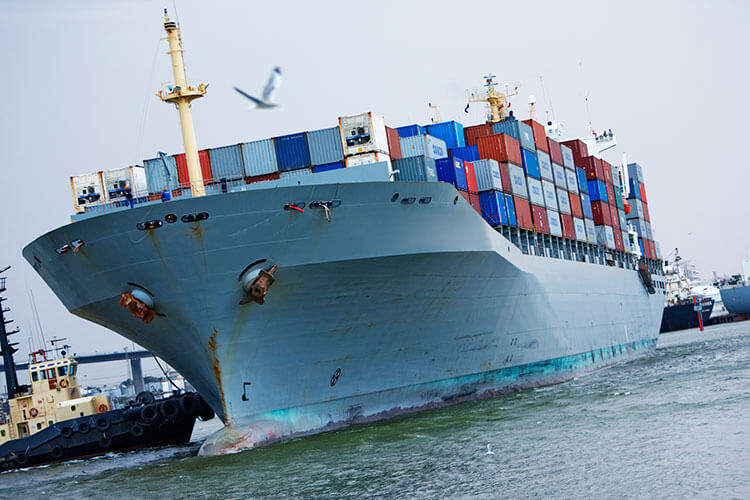Shipping technology that uses real-time weather information to enable ships to carry more cargo is being employed in Victoria. We look at how Dynamic Under Keel Clearance technology works and the benefits it’s bringing to Geelong and to Viva Energy.
A ship can only enter and leave a port if there’s enough water to keep it afloat. The amount of weight or cargo a ship carries has a direct impact on its draught (the part of the ship that sits below the waterline).
Traditionally, rules governing under keel clearance (the distance between the boat’s keel and the bottom of the harbour) have been fixed and static, calculated to cover the worst possible conditions. As a result, they have historically been conservative.
However, a system called Dynamic Under Keel Clearance (DUKC) allows ships to load deeper and use wider tidal windows than they have previously.
The system was developed by Victorian company OMC International, and was first installed in 1993 at Queensland’s Hay Point Coal Terminal. It has since been implemented in 23 ports around the world.
The technology uses a computer algorithm that takes account of prevailing conditions to predict whether a body of water can cater for each ship’s draught at any given time.
The DUKC system uses real-time information about tides and weather to calculate the available under keel clearance. It also advises pilots to adjust speed accordingly as they come down shallow channels.
Under very favourable conditions, DUKC can allow large ships to safely sail up to one metre deeper, meaning they will be able to carry considerably greater loads. DUKC is now being implemented in the Port of Geelong.

Why has the technology been introduced?
The Victorian Regional Channels Authority (VRCA) has implemented DUKC as both a risk-mitigation tool and a way of admitting large ships with more cargo into Geelong without requiring any changes to the channel infrastructure.
Given the right circumstances, ships might be allowed up to 12 metres’ draught, allowing an improvement in cargo uplift of 1350 to 3000 tonnes per vessel.
How will DUKC benefit the Port of Geelong?
As a bulk port, Geelong is expected to benefit considerably from technology that allows pilots to accurately gauge the maximum draught that ships can operate within the port. Companies are expected to be able to fill their bulk carriers and still safely navigate the channel, allowing them to import and export additional cargo.
Until 2016, vessels visiting Geelong, particularly those carrying fluids, did not bring a maximum cargo. Now that DUKC is fully operational, vessels are expected to carry more cargo without affecting the channel. Since full ships are a more efficient use of resources, Geelong port will become a more desirable destination for importers. In the same way, the port also becomes more attractive as an export location for all bulk commodities.
In financial terms, the more cargo each ship can carry, the larger the profits for the port.
Every extra centimetre of draught that a large bulk ship can be loaded means around an extra 150 tonnes of cargo which, at $110 per tonne, would amount to nearly an extra $16,500 for that ship. If, for example, Geelong services 900 ships per year, that would bring in a minimum additional $15 million of revenue per year, with the potential for much more.
In environmental terms, it’s expected that by adopting the DUKC system, Geelong will be able to reduce the need for channel dredging, thereby minimising impact on the marine environment. Carbon emissions would be reduced since fewer ships are needed to carry the same amount of tonnage. Increased safety would lower the risk of ship groundings and consequent environmental disaster.
What does this mean for Viva Energy?
Thys Heyns, General Manager Refining at Viva Energy, expects implementation of the Dynamic Under Keel Clearance system to greatly increase productivity and efficiency, since businesses will be able to safely transport more products into and out of the port.
“For Viva Energy, each additional 10cm in vessel draught results in savings of over $1 million per annum. This is just one of many steps that will help us build a sustainable refinery, and this is good for Geelong.”
Information provided in this article regarding Dynamic Under Keel Clearance was based on a media release by the Victorian Regional Channels Authority and information available at omcinternational.com but has not been endorsed by OMC International.
Want more information on the operations at the Geelong Refinery?
Find out more here